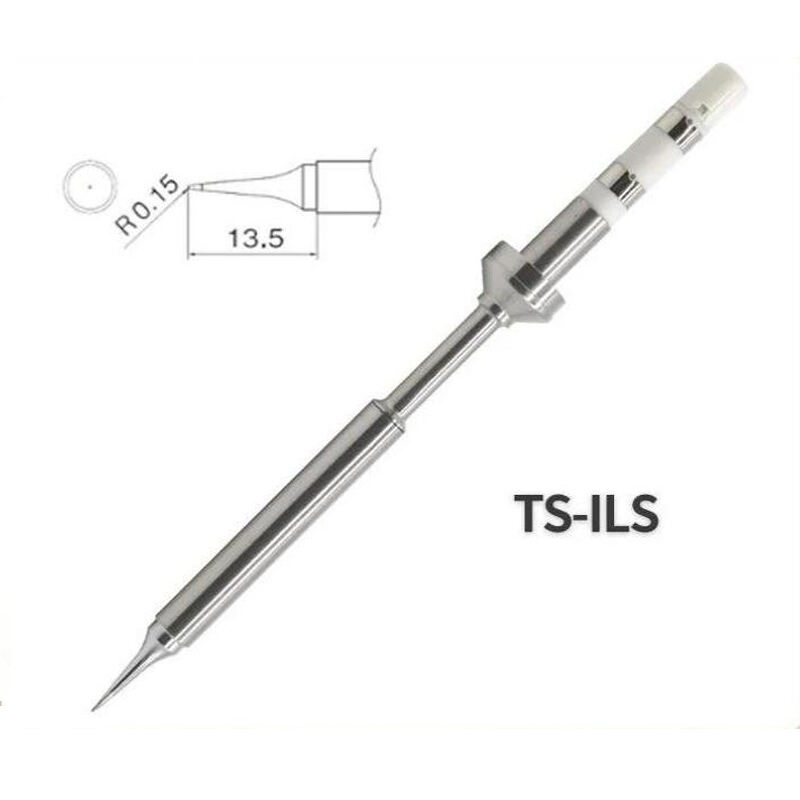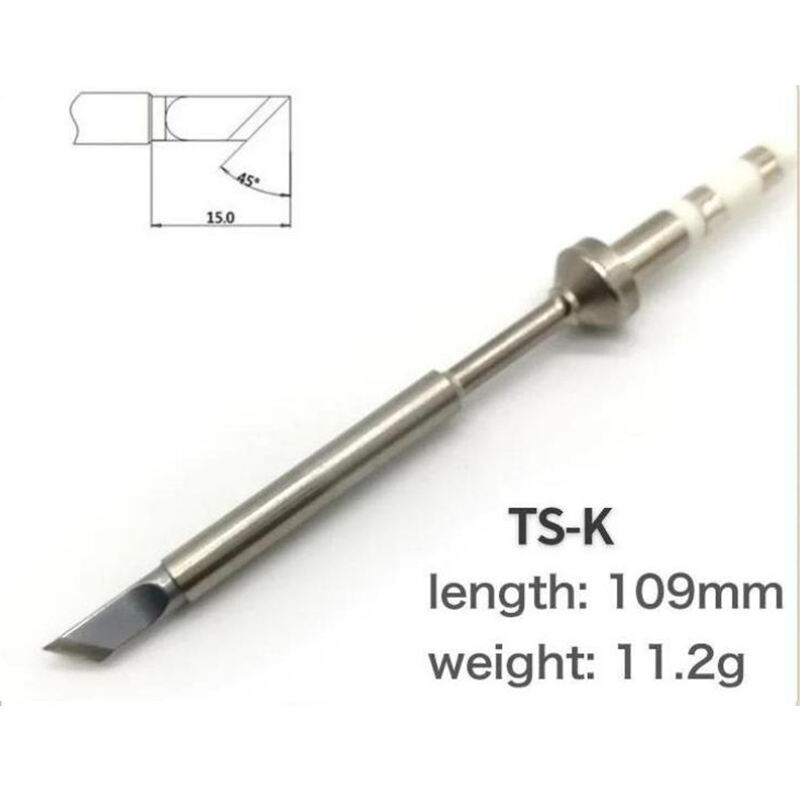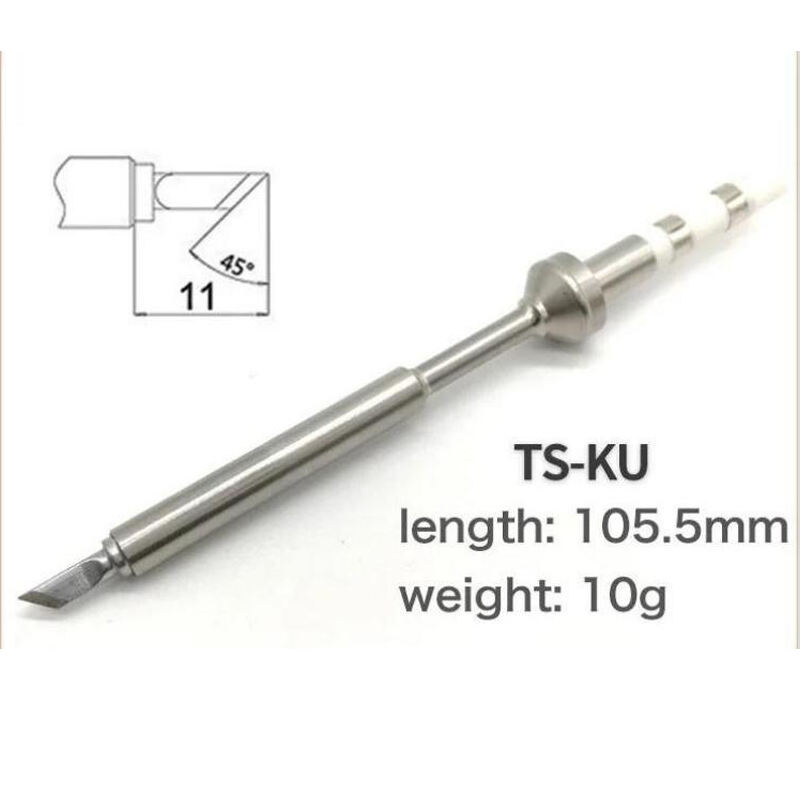Precision heating control is vital for achieving optimal soldering results and minimizing the risk of thermal damage. Contemporary soldering irons, such as the renowned Weller and Hakko models, are engineered with advanced temperature management features that facilitate repeatable processes. Research has shown that fluctuating temperatures during soldering can lead to over 30% rework costs in electronic manufacturing. The integration of temperature sensors further enhances this precision, providing real-time feedback to ensure stable heating. This not only improves the soldering quality but also significantly reduces defects and rework, making these soldering irons indispensable tools in the electronics industry.
Smart soldering stations represent a leap forward in soldering technology by utilizing IoT technology for improved connectivity and data sharing. These stations often come equipped with touchscreens that guide users through intricate processes, thereby improving usability and operator education. Industry reports suggest that the real-time feedback provided by such smart stations can enhance user skills and reduce errors by over 40%. The ability of these technologies to gather usage analytics allows manufacturers to tailor soldering parameters optimally, ensuring both efficiency and high-quality outcomes. As these stations continue to evolve, they will undoubtedly play a crucial role in the future of smart manufacturing.
Hakko and Weller have established themselves as leading manufacturers in the soldering industry, known for their reliable and precise solutions suitable for professionals and hobbyists alike. Their extensive product range, including various soldering irons and soldering stations, caters to different application needs. According to consumer satisfaction surveys, over 85% of users appreciate the reliability and precision these brands provide in soldering tasks. Comparative studies further confirm their high standards, revealing minimal failure rates. This reliability underscores the critical role of Hakko and Weller in enhancing the overall quality and efficiency of soldering processes in electronic manufacturing, thereby maintaining their status as industry leaders.
The TS-100 series offers users a versatile range of interchangeable tips, allowing for precise soldering in various applications. Selecting the appropriate tip is crucial as it affects heat distribution, directly impacting solder joint quality during detailed assemblies. Reviews and technical analyses have shown that utilizing the optimal tip can reduce soldering errors by up to 25%, underscoring the importance of careful tip selection. Practically, industry experts recommend specific tip shapes tailored for precision tasks with the TS-100 to maximize performance.

The TS-100 series incorporates advanced materials and coatings that are engineered to withstand extensive usage while maintaining performance. Adopting regular maintenance practices, such as meticulous cleaning and optimal temperature management, can substantially extend the lifespan of solder tips. Industry data highlights that a well-maintained solder tip can last up to 50% longer than one with insufficient care, thus lowering overall expenses. Feedback from seasoned users also emphasizes the value of protective features in TS-100 tools for bolstering sustainable usage practices.

Designed for rapid heating, the TS-100 model enhances workflow efficiency, significantly reducing downtime during soldering operations. Employing the right strategies and tools with the TS-100 can notably shorten project timelines. Studies corroborate that employing efficient soldering techniques can elevate productivity by up to 35%, particularly in high-volume environments. Observations from industry professionals illustrate practical ways to refine settings for increased efficiency and user comfort.

Automated Optical Inspection (AOI) represents a pivotal advancement in the quality control of solder joints, providing the capacity to detect defects that are often invisible to the naked eye. This is paramount in complex manufacturing environments where precision is crucial. The implementation of AOI systems has led to a reduction in defect rates by over 70%, showcasing their effectiveness. Features such as image recognition algorithms enable rapid inspection speeds while maintaining high accuracy, which is crucial for modern production demands. Furthermore, tech reports affirm that AOI technology minimizes manual inspection errors, thereby enhancing overall product reliability.
Predictive maintenance algorithms, leveraging historical data and machine learning, play a crucial role in forecasting potential equipment failures before they occur, thus significantly reducing downtime. Research indicates that companies employing these strategies can achieve up to 20% in cost savings related to maintenance expenditures. By analyzing various metrics from equipment, these algorithms enable manufacturers to plan maintenance schedules more effectively. Global studies further indicate that predictive maintenance can enhance equipment lifespan by over 30%, ensuring consistent performance in soldering processes.
3D X-ray technology provides an unparalleled view of solder joints, allowing for detailed analysis of hidden connections in compact assemblies. Utilization of this technology has shown to improve defect detection rates by 50% compared to traditional methods. This non-destructive testing method is vital, especially for high-density connections found in modern electronics, ensuring their reliability. Statistically significant findings suggest that rigorous 3D X-ray inspection methods lead to a reduction in product recalls by manufacturers, bolstering product quality assurance measures.
 Hot News
Hot News